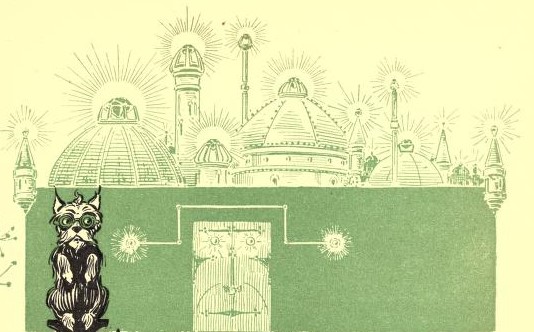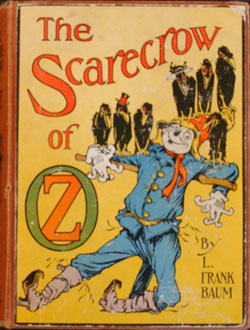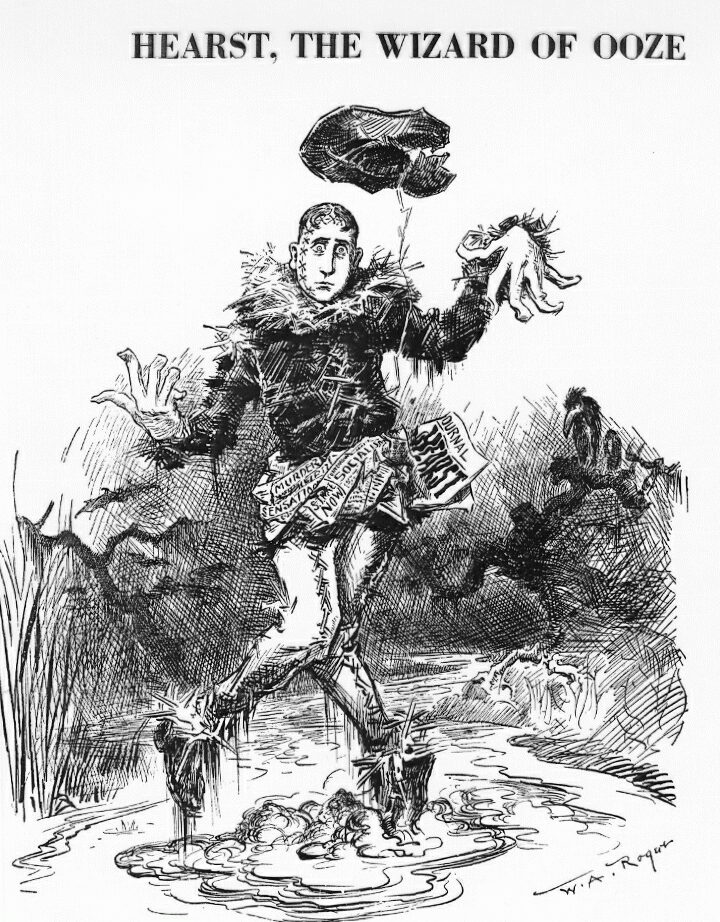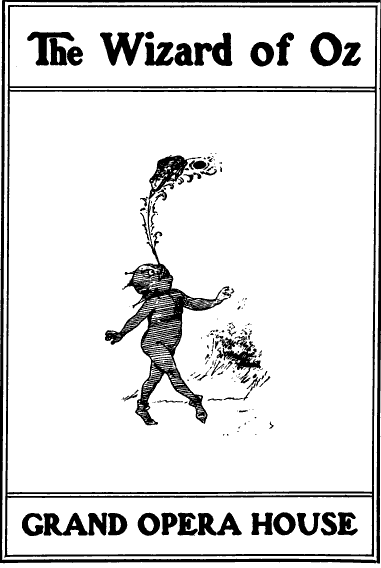|
Denslow
William Wallace Denslow (; May 5, 1856 – March 29, 1915), professionally W. W. Denslow, was an American illustrator and caricaturist remembered for his work in collaboration with author L. Frank Baum, especially his illustrations of ''The Wonderful Wizard of Oz''. Denslow was an editorial cartoonist with a strong interest in politics, which has fueled political interpretations of ''The Wonderful Wizard of Oz''. Biography Born in Philadelphia to a tobacco wholesaler, Denslow spent brief periods at the National Academy of Design and the Cooper Union in New York, but was largely self-educated and self-trained. In the 1880s, he traveled about the United States as an artist and newspaper reporter; he came to Chicago for the World's Columbian Exposition in 1893, and chose to stay. Denslow acquired his earliest reputation as a poster artist; he also designed books and bookplates, and was the first artist invited to work at the Roycroft Press. Denslow may have met Baum at the Ch ... [...More Info...] [...Related Items...] OR: [Wikipedia] [Google] [Baidu] |
The Wonderful Wizard Of Oz
''The Wonderful Wizard of Oz'' is a children's novel written by author L. Frank Baum and illustrated by W. W. Denslow. It is the first novel in the Oz series of books. A Kansas farm girl named Dorothy ends up in the magical Land of Oz after she and her pet dog Toto are swept away from their home by a tornado. Upon her arrival in Oz, she learns she cannot return home until she has destroyed the Wicked Witch of the West. The book was first published in the United States in May 1900 by the George M. Hill Company. In January 1901, the publishing company completed printing the first edition, a total of 10,000 copies, which quickly sold out. It had sold three million copies by the time it entered the public domain in 1956. It was often reprinted under the title ''The Wizard of Oz'', which is the title of the successful The Wizard of Oz (1902 musical), 1902 Broadway musical adaptation as well as the classic The Wizard of Oz (1939 film), 1939 live-action film. The ground-breaking ... [...More Info...] [...Related Items...] OR: [Wikipedia] [Google] [Baidu] |
Scarecrow (Oz)
The Scarecrow is a character in the fictional Land of Oz created by American author L. Frank Baum and illustrator W.W. Denslow. In his first appearance, the Scarecrow reveals that he lacks a brain and desires above all else to have one. In reality, he is only two days old and merely naïve. Throughout the course of the novel, he proves to have the brains he seeks and is later recognized as "the wisest man in all of Oz," although he continues to credit the Wizard for them. He is, however, wise enough to know his own limitations and all too happy to hand the rulership of Oz, passed to him by the Wizard, to Princess Ozma, and become one of her trusted advisors, though he typically spends more time having fun than advising. Character biography In ''The Wonderful Wizard of Oz'' In Baum's classic 1900 novel ''The Wonderful Wizard of Oz'', the living scarecrow encounters Dorothy Gale in a field in the Munchkin Country while she is on her way to the Emerald City. He tells her about his ... [...More Info...] [...Related Items...] OR: [Wikipedia] [Google] [Baidu] |
Queer Visitors From The Marvelous Land Of Oz
''Queer Visitors from the Marvelous Land of Oz'' was a newspaper comic strip written by L. Frank Baum and illustrated by Walt McDougall, a political cartoonist for the ''Philadelphia North American''. ''Queer Visitors'' appeared in the ''North American'', the ''Chicago Record-Herald'' and other newspapers from 28 August 1904 to 26 February 1905. The series chronicles the misadventures of the Scarecrow, the Tin Woodman, the Woggle-Bug, Jack Pumpkinhead, and the Sawhorse, as the Gump flies them to various cities in the United States. The comic strip in turn produced its own derivation, ''The Woggle-Bug Book'' (1905). ''Queer Visitors'' was formatted as a series of prose stories, surrounded by large illustrations, therefore not a comic strip in the modern sense. Development The project was designed to promote ''The Marvelous Land of Oz''. Coincidentally, it ran at the same time as a comic strip featuring Oz characters visiting America, that was written and drawn by W. W. Denslow. ... [...More Info...] [...Related Items...] OR: [Wikipedia] [Google] [Baidu] |
Billy Bounce
Billy Bounce was a comic strip published erratically by noted illustrator W. W. Denslow (1901–1902) and later C. W. Kahles (1902–1905) between November 10, 1901, and December 3, 1905. The strip centers on the actions of the title character, a ball-shaped boy who is capable either of bouncing long distances or actual flight. It is noted as one of the earliest comic strips in which the protagonist has superpowers.''Billy Bounce'' at Don Markstein's Toonopedia Archived from the original on June 11, 2015. Like its contemporary, '' |
Dot And Tot Of Merryland
''Dot and Tot of Merryland'' is a 1901 novel by L. Frank Baum. After Baum wrote '' The Wonderful Wizard of Oz'', he wrote this story about the adventures of a little girl named Dot and a little boy named Tot in a land reached by floating on a river that flowed through a tunnel. The land was called Merryland and was split into seven valleys. The book was illustrated by artist W. W. Denslow, who had illustrated three previous Baum books. Unlike ''The Wonderful Wizard of Oz'', ''Dot and Tot of Merryland'' contained no tipped in color plates, but was filled with colored text illustrations. There were four full page pictures. The book is the last Baum book that was illustrated by W. W. Denslow. ''Dot and Tot of Merryland'' was first published by the Geo. M. Hill company of Chicago in 1901. Books of Wonder reprinted ''Dot and Tot of Merryland'' with minor text alterations and new illustrations by Donald Abbott. The reprint contains no color illustrations, but Mr. Abbott styled his ... [...More Info...] [...Related Items...] OR: [Wikipedia] [Google] [Baidu] |
Bluck's Island, Bermuda
Bluck's Island (formerly Denslow sIsland, Dyer sIsland) is an island of Bermuda. It lies in the harbor of Hamilton in Warwick Parish. Previously known as Dyer's island, it was once owned by the Dyer family in the 19th century. Originally owned by Henry Thomas Dyer, son of Patrick O'dwyer. In the early 20th century the island was owned by illustrator William Wallace Denslow who built a house there and declared himself "King Denslow I, Monarch of Denslow Islands and Protector of Coral Reefs". Between 1917 and 1919, the island hosted the Bermuda Biological Station for Research The Bermuda Institute of Ocean Sciences (known as BIOS) is an independent, non-profit marine science and education institute located in Ferry Reach, St. George's, Bermuda. The institute, founded in 1903 as the Bermuda Biological Station, host ...; this was transferred for the period from Agar Island">s/nowiki> Island, which had been " requisitioned for military purposes". References Islands of B ... [...More Info...] [...Related Items...] OR: [Wikipedia] [Google] [Baidu] |
By The Candelabra's Glare
''By the Candelabra's Glare'' is a 1898 collection of poems written by L. Frank Baum. One of his earliest works, the book was significant in Baum's evolution from amateur to professional author. The book Baum's first book, ''Mother Goose in Prose'', had been published in 1897 by the Chicago firm Way and Williams. The book was attractively produced, with illustrations by a young Maxfield Parrish; but its relatively high price for a children's book limited its commercial success. Publisher Way and Williams went bankrupt in 1898. For his second book, Baum reverted to his earlier amateur mode. Baum had had his own printing press as a youth, and had created a family newspaper; in 1898 he obtained another small printing press and some cases of type, and personally printed and bound 99 copies of a collection of his verse. Baum's sons took over the press when he was done with it. Help from friends Baum had lived in Chicago since 1891, and was intimate with a circle of the city's journalis ... [...More Info...] [...Related Items...] OR: [Wikipedia] [Google] [Baidu] |
Tin Woodman
Nick Chopper, the Tin Woodman, also known as the Tin Man or—mistakenly—the "Tin Woodsman," is a character in the fictional Land of Oz created by American author L. Frank Baum. Baum's Tin Woodman first appeared in his classic 1900 book '' The Wonderful Wizard of Oz'' and reappeared in many other subsequent Oz books in the series. In late 19th-century America, men made out of various tin pieces were used in advertising and political cartoons. Baum, who was editing a magazine on decorating shop windows when he wrote ''The Wonderful Wizard of Oz'', was reportedly inspired to invent the Tin Woodman by a figure he had built out of metal parts for a shop display. Character In ''The Wonderful Wizard of Oz'', Dorothy Gale befriends the Tin Woodman after they find him rusted in the forest, as he was caught in rain, and use his oil can to release him. He follows her to the Emerald City to get a heart from Wizard of Oz (character), The Wizard. They are joined on their adventure ... [...More Info...] [...Related Items...] OR: [Wikipedia] [Google] [Baidu] |
Paul Tietjens
Paul Tietjens (; May 22, 1877 – November 25, 1943) was an American composer of the early twentieth century. He is best known for composing music for ''The Wizard of Oz'', the 1902 stage adaptation of L. Frank Baum's '' The Wonderful Wizard of Oz'', one of the great popular hits of its era. Tietjens was born and raised in St. Louis, Missouri. At age 15 he appeared as a piano soloist with the St. Louis Symphony. He later studied in Europe with Hugo Kaun, Harold Bauer, and Theodor Leschetizky. Early in his career, Tietjens's ambition was to establish himself as a successful composer of comic operas and operettas. He approached L. Frank Baum in March 1901, not long after the publication and success of ''The Wonderful Wizard of Oz''. According to Baum's later recollection, :"The thought of making my fairy tale into a play had never even occurred to me when, one evening, my doorbell rang and I found a spectacled young man standing on the mat." By another report, though, they me ... [...More Info...] [...Related Items...] OR: [Wikipedia] [Google] [Baidu] |
Political Interpretations Of The Wonderful Wizard Of Oz
Political interpretations of ''The Wonderful Wizard of Oz'' include treatments of the modern fairy tale (written by L. Frank Baum and first published in 1900) as an allegory or metaphor for the political, economic, and social events of America in the 1890s. Scholars have examined four quite different versions of Oz: the novel of 1900, the Broadway play of 1902, the Hollywood film of 1939, and the numerous follow-up Oz novels written after 1900 by Baum and others. The political interpretations focus on the first three, and emphasize the close relationship between the visual images and the story line to the political interests of the day. Biographers report that Baum had been a political activist in the 1890s with a special interest in the money question of gold and silver (bimetallism), and the illustrator William Wallace Denslow was a full-time editorial cartoonist for a major daily newspaper. For the 1902 Broadway production Baum inserted explicit references to prominent poli ... [...More Info...] [...Related Items...] OR: [Wikipedia] [Google] [Baidu] |
The Wizard Of Oz (1902 Musical)
''The Wizard of Oz'' was a 1902 musical extravaganza based on the 1900 novel ''The Wonderful Wizard of Oz'' by L. Frank Baum. Although Baum is the credited bookwriter, Glen MacDonough was hired on as jokewriter after Baum had finished the script. Much of the original music was by Paul Tietjens and has been mostly forgotten, although it was still well-remembered and in discussion at MGM in 1939 when the classic film version of the story was made. The show's history is covered in more than 100 pages of the book ''Oz Before the Rainbow; L Frank Baum's 'The Wonderful Wizard of Oz' on stage and screen to 1939'' by Mark Evan Swartz. The show premiered at the Chicago Grand Opera House on June 16, 1902 and then went on tour throughout the upper Midwest before moving to the Majestic Theatre on Broadway on January 21, 1903, where it ran for 293 performances through October 3. A second company was established, and the show went on tour from September 1903 through March 1904 befo ... [...More Info...] [...Related Items...] OR: [Wikipedia] [Google] [Baidu] |
There Was An Old Woman Who Lived In A Shoe
"There was an Old Woman Who Lived in a Shoe" is a popular English language nursery rhyme, with a Roud Folk Song Index number of 19132. Debates over its meaning and origin have largely centered on attempts to match the old woman with historical female figures who have had large families, although King George II (1683–1760) has also been proposed as the rhyme's subject. Lyrics The most common version of the rhyme is: The earliest printed version in Joseph Ritson's ''Gammer Gurton's Garland'' in 1794 has the coarser last line: Many other variations were printed in the 18th and 19th centuries. Marjorie Ainsworth Decker published a Christian version of the rhyme in her ''The Christian Mother Goose Book'' published in 1978: Origins and meaning Iona and Peter Opie pointed to the version published in ''Infant Institutes'' in 1797, which finished with the lines: The term "a-loffeing", they believe, was Shakespearean, suggesting that the rhyme is considerably older than th ... [...More Info...] [...Related Items...] OR: [Wikipedia] [Google] [Baidu] |





